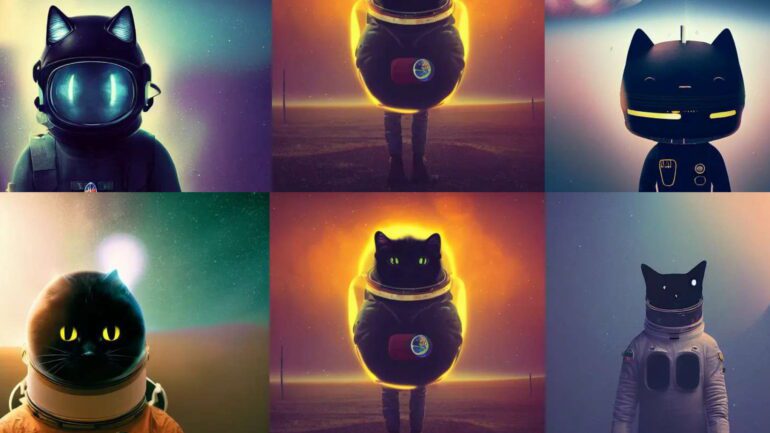TL;DR:
- Generative models in machine learning have made strides in producing images from text inputs.
- Aligning these models with human preferences remains a challenge due to distribution disparities.
- A Chinese research team introduces ImageReward, a text-to-image human preference reward model.
- ImageReward is trained on expert-annotated comparisons, addressing challenges of image generation.
- The model outperforms existing methods with 65.14% preference accuracy.
- Removing critical components from ImageReward leads to significant drops in preference accuracy.
- ImageReward bridges the gap between AI generative capabilities and human values.
Main AI News:
In the rapidly advancing field of machine learning, the development of generative models capable of producing images from textual inputs has garnered significant attention. While these models show immense promise and potential applications, aligning their outputs with human preferences remains a primary challenge due to disparities between pre-training and user-prompt distributions. These discrepancies often result in known issues such as inaccurate image-text alignment, unrealistic depiction of the human body, non-adherence to human aesthetic preferences, and the inadvertent introduction of toxicity and biases in the generated content.
Addressing these challenges necessitates more than mere architectural improvements and expanded pre-training data. Researchers in the domain of natural language processing have been exploring reinforcement learning from human feedback as a potential solution. This approach involves creating a reward model through expert-annotated comparisons, thereby guiding the generative models toward embodying human preferences and values. However, the annotation process itself can be time-consuming and resource-intensive.
To tackle these challenges head-on, a pioneering research team from China has introduced a groundbreaking solution for generating images from text prompts: ImageReward. This revolutionary model represents the first-ever general-purpose text-to-image human preference reward system, meticulously trained on a corpus of 137,000 pairs of expert comparisons. These comparisons are based on real-world user prompts and model outputs, ensuring a practical and relevant alignment between human preferences and AI-generated content.
The development of ImageReward entailed leveraging a graph-based algorithm to select diverse prompts, followed by engaging annotators who possessed at least a college-level education. This deliberate choice aimed to foster consensus among the annotators regarding the ratings and rankings of the generated images. The researchers meticulously analyzed the performance of their text-to-image model across different types of prompts, meticulously curating a dataset of 8,878 useful prompts. Each generated image in this dataset was scored based on three essential dimensions, allowing for a comprehensive evaluation of their performance. Notably, the researchers identified issues such as problematic body depiction and repeated generation as the most prevalent challenges. Furthermore, their investigation delved into the influence of “function” words in prompts on the model’s performance, highlighting the significance of well-crafted function phrases in enhancing text-image alignment.
The experimental phase centered on training ImageReward, a preference model for generated images, using annotations to capture human preferences. The researchers employed the BLIP architecture as the model’s backbone, strategically freezing certain transformer layers to prevent overfitting. The optimal hyperparameters were determined through an exhaustive grid search using a dedicated validation set. The formulation of the loss function was rooted in the ranked images corresponding to each prompt, with the ultimate goal of autonomously selecting images that resonate with human observers.
Throughout the experimentation, ImageReward was trained on a robust dataset comprising over 136,000 pairs of image comparisons. Subsequently, it was rigorously benchmarked against other existing models using various metrics, such as preference accuracy, recall, and filter scores. Remarkably, ImageReward outperformed its counterparts, achieving an impressive preference accuracy score of 65.14%. In addition to its superiority in terms of image fidelity, which encompasses complexities beyond aesthetics, ImageReward excelled at maximizing the distinction between superior and inferior images. To gain deeper insights, the researchers conducted an ablation study to analyze the impact of removing specific components or features from the proposed ImageReward model. The findings of this study emphasized the critical role of the transformer backbone, as removing any of the three branches—namely, the transformer backbone, image encoder, or text encoder—led to a significant drop in the preference accuracy of the model. Notably, removing the transformer backbone yielded the most substantial performance deterioration, underscoring its indispensable contribution to the overall model efficacy.
This article has showcased a groundbreaking investigation undertaken by a Chinese research team, introducing ImageReward as a novel text-to-image human preference reward model. This cutting-edge model effectively addresses the existing issues prevalent in generative models by aligning them with human values. The researchers established a robust pipeline for annotation and diligently constructed a dataset comprising 137,000 comparisons and 8,878 prompts. Through comprehensive experimentation, ImageReward has proven to surpass existing methods and can be considered an ideal evaluation metric. Building upon their accomplishments, the team plans to refine the annotation process, expand the model’s coverage to encompass more categories and explore the potential of reinforcement learning to further push the boundaries of text-to-image synthesis.
Conclusion:
The introduction of ImageReward represents a significant advancement in the field of text-to-image generation. By training the model on expert-annotated comparisons, the research team has successfully aligned AI-generated images with human preferences and values. This breakthrough has promising implications for the market, as it opens doors for applications in various industries such as advertising, design, and entertainment. ImageReward’s superior performance, with its high preference accuracy score and focus on image fidelity, positions it as a leading solution in the market. The critical role played by the transformer backbone underscores the importance of this architecture in achieving optimal results. As the annotation process is refined and the model expands its coverage, we can expect further improvements and applications in text-to-image synthesis. Businesses should take note of ImageReward’s potential and consider integrating this technology to enhance their creative processes and deliver content that better resonates with human preferences.

